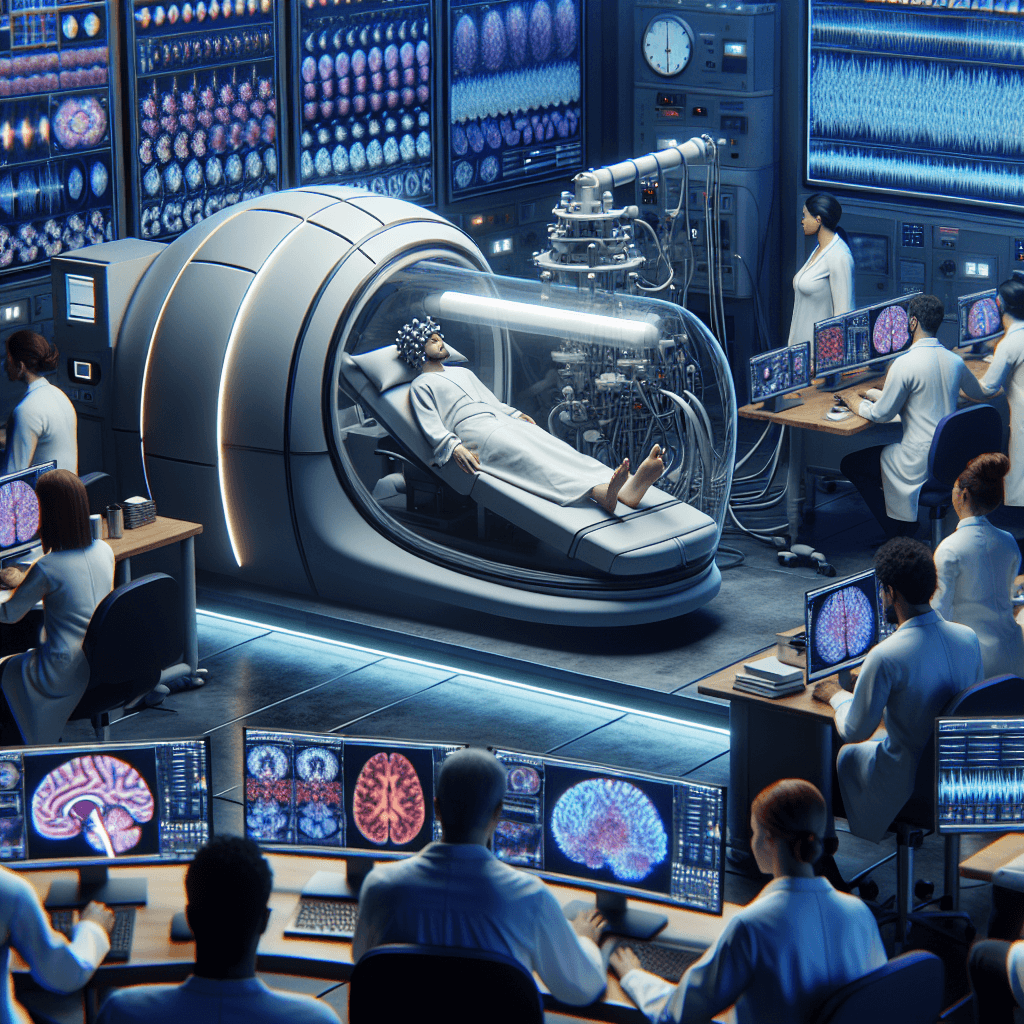
The study of dreams has fascinated researchers and laypeople alike for centuries. With rapid advancements in technology and neuroscience, the future of dream research is poised to uncover deeper insights into the mysteries of the subconscious mind. This article explores the most promising advances and emerging technologies shaping the future of dream research.
The Future of Dream Research: Advances and Emerging Technologies
Neuroimaging Techniques
Functional Magnetic Resonance Imaging (fMRI)
fMRI measures brain activity by detecting changes in blood flow, allowing researchers to observe which areas of the brain are active during different stages of sleep and dreaming.
Electroencephalography (EEG)
EEG is commonly used to measure the electrical activity of the brain. Cutting-edge EEG technology now allows for higher temporal resolution, providing more accurate data on the electrical patterns associated with different dream states.
Future Dream Research Methods
- Combining fMRI and EEG for more comprehensive brain mapping during dream states.
- Development of portable neuroimaging devices for at-home dream monitoring.
Artificial Intelligence (AI) and Machine Learning
Dream Analysis
AI algorithms are being developed to analyze complex data derived from neuroimaging and EEG. These algorithms can identify patterns and correlations that might elude human researchers, providing new insights into dream content and structure.
Predictive Models
Machine learning models can predict dream content based on pre-sleep cognitive activities and emotional states, potentially leading to personalized sleep coaching and therapies.
AI in Dream Interpretation
- Development of AI-powered dream journals that offer instant analysis and interpretation.
- Creation of large-scale dream databases for pattern recognition across populations.
Direct Brain Stimulation Techniques
Transcranial Magnetic Stimulation (TMS)
TMS involves non-invasive stimulation of the brain using magnetic fields. Emerging research suggests TMS could be used to influence dream content or induce lucid dreaming.
Transcranial Direct Current Stimulation (tDCS)
tDCS delivers a low electrical current to specific parts of the brain. Early studies show that it may be possible to enhance particular cognitive functions during dreaming, such as memory consolidation.
Advancements in Brain Imaging for Dream Interpretation
- Integration of brain stimulation techniques with real-time neuroimaging for precise dream manipulation.
- Development of targeted therapies for sleep disorders using brain stimulation.
Wearable Sleep Technology
Smart Sleep Masks and Headbands
These devices can monitor various physiological parameters, such as brain waves, eye movement, and heart rate. Advanced versions could even influence dream states by emitting lights, sounds, or mild electrical pulses.
Mobile Apps
Numerous apps now track sleep patterns and offer features designed to improve sleep quality and potentially influence dreams. Some apps use soundscapes or guided meditation to induce specific types of dreams.
Future Applications of Lucid Dreaming Techniques
- Development of wearable devices specifically designed to induce and maintain lucid dreams.
- Creation of virtual reality interfaces for dream exploration and manipulation.
Lucid Dreaming Research
Induction Techniques
Research is focused on developing reliable methods for inducing lucid dreams, where the dreamer is aware they are dreaming and can control the dream environment. Techniques like reality testing, wake-induced lucid dreaming (WILD), and mnemonic induction of lucid dreams (MILD) are being refined with neurofeedback and stimulation methods.
Potential Applications
Lucid dreaming has potential therapeutic benefits, such as treating PTSD-related nightmares, improving problem-solving skills, and enhancing creativity.
Emerging Technologies in Dream Research Studies
- Development of pharmaceutical compounds to enhance lucid dreaming abilities.
- Creation of brain-computer interfaces for direct dream communication and recording.
Big Data and Collaborative Research
Crowdsourced Dream Databases
Platforms that allow users to log and share their dreams provide large datasets for researchers to analyze. These databases can uncover trends and commonalities in dreams across different populations and cultures.
Interdisciplinary Collaboration
The integration of psychology, neuroscience, AI, and wearable technology fosters a holistic approach to understanding dreams, enabling more comprehensive research.
How Will Dream Analysis Change in the Future
- Development of global dream databases for cross-cultural dream analysis.
- Creation of AI-powered dream interpretation platforms that learn from vast amounts of user data.
Ethical and Philosophical Considerations
Privacy Concerns
As dream monitoring technology becomes more advanced, issues related to cognitive privacy and consent will become increasingly important.
Philosophy of Consciousness
Advances in dream research also contribute to broader debates in the philosophy of mind, particularly concerning the nature of consciousness and the subconscious.
Neuroscience of Dreaming
Brain Plasticity and Dreams
Exploration of how dreaming influences neural plasticity and memory consolidation.
Sleep Cycles and Dream Patterns
- In-depth analysis of how different sleep stages affect dream content and recall.
- Study of the relationship between circadian rhythms and dream experiences.
Dream Therapy Advancements
Nightmare Treatment
Development of targeted therapies for recurring nightmares and sleep terrors.
Cognitive Behavioral Dream Therapy
- Creation of personalized dream-based interventions for mental health issues.
- Exploration of dreams as a tool for personal growth and self-discovery.
Future of Sleep Studies
Sleep Optimization
- Development of AI-driven sleep schedules tailored to individual circadian rhythms and dream patterns.
- Creation of smart sleep environments that adapt in real-time to optimize dream experiences.
Dream-Enhanced Learning
- Exploration of techniques to use dreams for skill acquisition and knowledge retention.
- Development of dream-based language learning programs.
Conclusion
The future of dream research holds exciting possibilities, driven by technological advancements and interdisciplinary collaboration. As we unravel the complexities of our dream states, we not only stand to gain insights into the human mind but also develop novel applications for mental health, creativity, and beyond. It's an evolving field ripe with both promise and profound questions, pushing the boundaries of our understanding of consciousness and the human experience.

You must be logged in to post a comment. Please Login or Register .